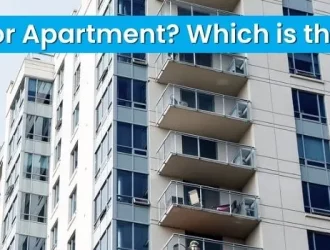Note that at the end of the article, I’ve provided a downloadable free lease agreement available for you. The agreement is in both English and Thai language.
Renting a property can be an exciting and rewarding experience, but it is essential to have a rental contract agreement in place to protect both the landlord and the tenant. A lease agreement is a legally binding contract that outlines the terms and conditions of the rental arrangement. It establishes the rights and responsibilities of both parties and serves as a reference point throughout the tenancy. In this ultimate guide, we will explore the importance of having a rental agreement, understand its components, explore different types of agreements, learn how to create one, and provide tips for negotiating and reviewing the agreement.
Importance of having a rental agreement
A rental agreement is crucial for several reasons. Firstly, it provides clarity and sets clear expectations for both the landlord and the tenant. By clearly outlining the terms of the tenancy, such as rent amount, payment due dates, and length of the lease, misunderstandings and disputes can be avoided. In addition, a rental contract Thailand functions as a legally binding agreement that safeguards the rights of both parties involved. It guarantees that both the landlord and the tenant are fully informed about their responsibilities and entitlements, thereby minimizing the risk of any future legal complications. Moreover, a rental contract plays a crucial role in establishing a professional and cordial relationship between the landlord and tenant, promoting mutual trust and effective communication.
<< Want to Get rental agreement form? Click Here >>
Understanding the components of a rental lease agreement
A rental agreement consists of several key components that define the terms and conditions of the rental arrangement. These components include:
1. Parties involved
The rental agreement should clearly identify the landlord and the tenant. Include their names, addresses, and contact information. This section should also state whether the tenant is an individual or a company.
2. Property information
Provide a detailed description of the rental property, including its address, unit number (if applicable), and any specific details that distinguish it from other properties.
3. Lease terms
Specify the length of the lease, whether it is a month-to-month agreement or a fixed-term lease. Outline the start and end dates of the lease, as well as any renewal or termination options.
4. Rent and payment details
Clearly state the amount of rent, the due date, and the acceptable payment methods. Include any late payment penalties or discounts for early payment.
5. Security deposit
Outline the amount of the security deposit required and the conditions for its return. Include details on how the deposit will be held and whether any deductions can be made for damages or unpaid rent.
6. Maintenance and repairs
Define the responsibilities of both the landlord and the tenant regarding maintenance and repairs. Specify which party is responsible for specific tasks, such as lawn care, appliance repairs, or plumbing issues.
7. Rules and regulations
Include any rules and regulations that the tenant must adhere to, such as noise restrictions, pet policies, or smoking restrictions. Clearly state the consequences for violating these rules.
8. Termination and eviction
Outline the process for terminating the lease, including notice periods and any penalties for early termination. Include the circumstances under which the landlord can evict the tenant and the steps involved in the eviction process.
Top 5 Cheapest Places to Rent in Thailand
Different types of rental agreements
There are various types of lease agreements to suit different rental situations. Understanding the different types can help you choose the most appropriate agreement for your needs. Here are a few common types of rental agreements:
1. Fixed-term lease agreement
A fixed-term lease agreement, also known as a lease contract, is a rental agreement that specifies a predetermined start and end date. This type of agreement is typically used for long-term rentals, such as a year-long lease. It provides both the landlord and the tenant with a clear understanding of the lease duration.
2. Month-to-month rental agreement
A month-to-month rental agreement is a more flexible option that allows either party to terminate the lease with a shorter notice period. This type of agreement is ideal for tenants who may need to relocate frequently or for landlords who wish to maintain flexibility.
3. Sublease agreement
A sublease agreement is used when a tenant wishes to rent out a portion or the entire rental property to another person. This type of agreement allows the original tenant, known as the sublessor, to become a landlord to the sublessee. It is important to check the original lease agreement to ensure that subleasing is permitted.
<< The Future of the Real Estate Market Towards 2024 >>
How to create a rental lease agreement
Creating a lease agreement may seem like a daunting task, but it can be broken down into a few simple steps. Follow these guidelines to create a comprehensive and legally binding rental agreement:
1. Gather necessary information
Collect all the relevant information needed for the lease agreement, including the parties involved, property details, lease terms, rent amount, and any specific rules or regulations.
2. Use a template or seek legal advice
Utilize a rental agreement template to ensure you include all the necessary elements. Templates can be found online or obtained from legal professionals. If you have unique circumstances or require specific clauses, it is advisable to seek legal advice to ensure your agreement is comprehensive and enforceable.
3. Customize the agreement
Tailor the rental lease agreement to your specific needs. Include any additional clauses or provisions that are relevant to your rental situation. Ensure that the language used is clear, concise, and easy to understand.
4. Review and edit
Thoroughly review the rental agreement for any errors, inconsistencies, or ambiguous language. Make any necessary edits or corrections to ensure the agreement accurately reflects the intended terms and conditions.
5. Sign and distribute copies
Once both parties are satisfied with the rental agreement, sign the document and distribute copies to all parties involved, including the landlord, the tenant, and any property management professionals. Keep a copy for your records.
The Benefits of Investment Properties in Emerging Areas
Key elements to include in a rental lease agreement
When creating a rental agreement, certain key elements should always be included to ensure comprehensive coverage. These elements include:
1. Names and contact information
Include the full legal names, addresses, and contact information of both the landlord and the tenant. This ensures that there is no confusion regarding the identities of the parties involved.
2. Rent amount and payment details
Clearly specify the amount of rent, the due date, and the acceptable payment methods. Include any penalties for late payment or bounced checks.
3. Security deposit details
Outline the amount of the security deposit required and the conditions for its return. Clearly state the circumstances under which deductions can be made and the timeline for returning the deposit.
4. Lease term and renewal options
Specify the length of the lease and whether there are any renewal options. Clearly state the start and end dates of the lease and any notice periods required for termination or renewal.
5. Maintenance and repairs
Define the responsibilities of both the landlord and the tenant regarding maintenance and repairs. Include details on who is responsible for specific tasks and how repairs should be reported.
6. Utilities and services
Specify which utilities and services are included in the rent and which are the responsibility of the tenant. This may include water, electricity, gas, trash collection, or internet services.
7. Entry and access
Outline the circumstances under which the landlord or their representatives can enter the rental property. State the notice period required and any restrictions on access.
8. Governing law and jurisdiction
Include a clause specifying the governing law and jurisdiction that will apply in the event of any legal disputes.
<< Best Investment Options For Beginners >>
Common mistakes to avoid when creating a rental agreement
When creating a rental agreement, it is important to avoid common mistakes that can lead to legal issues or misunderstandings. Here are some common mistakes to avoid:
1. Using vague or ambiguous language
Ensure that the language used in the rental agreement is clear, concise, and easy to understand. Avoid using jargon or legal terms that may confuse the parties involved. in the end of the article you will find a rental contract thailand + sell contract for download for free.
2. Failing to include important clauses
Make sure to include all the necessary clauses and provisions relevant to your rental situation. This may include pet policies, smoking restrictions, or rules regarding common areas.
3. Neglecting to document the property’s condition
Before the tenant moves in, conduct a thorough inspection of the property and document its condition. Take photographs or videos to serve as evidence in case of disputes regarding damages.
4. Skipping the review and editing process
Thoroughly review the rental agreement for any errors, inconsistencies, or missing information. Make sure to edit and revise the document until it accurately reflects the intended terms and conditions.
5. Not keeping copies of the agreement
Always keep copies of the signed rental agreement for your records. This will serve as a reference in case of any disputes or legal issues that may arise in the future.
Tips for negotiating and reviewing a rental agreement
Negotiating and reviewing a rental agreement is an essential step in ensuring that both parties are satisfied with the terms and conditions. Here are some tips to consider:
1. Read the agreement thoroughly
Carefully read through the rental agreement to ensure that you understand all the terms and conditions. If something is unclear or ambiguous, seek clarification from the landlord or consult with a legal professional.
2. Negotiate modifications if needed
If there are certain clauses or provisions in the rental agreement that you are not comfortable with, discuss them with the landlord. Negotiate modifications that are agreeable to both parties.
3. Seek legal advice if necessary
If you have any concerns or questions regarding the rental agreement, it is advisable to seek legal advice. A legal professional can review the agreement and provide guidance to protect your interests.
4. Document any agreed-upon changes
If modifications are made to the rental agreement during negotiations, ensure that they are documented and signed by both parties. This will prevent any misunderstandings or disputes in the future.
5. Keep a copy of the signed agreement
Once the rental agreement is finalized and signed, make sure to keep a copy for your records. This will serve as a reference throughout the tenancy and can be used as evidence in case of any disputes.
<< Investment Income Tax | Full Details >>
Resources for finding rental lease agreement templates and forms
Creating a rental agreement from scratch can be time-consuming and complex. Fortunately, there are numerous resources available to assist you in finding rental agreement templates and forms. Here are a few options:
1. Online legal websites
Websites such as LegalZoom, Rocket Lawyer, and LawDepot offer a wide range of rental agreement templates and forms. These templates can be customized to suit your specific needs and downloaded in various formats.
2. State and local government websites
Many state and local government websites provide free rental agreement templates and forms. These templates are often tailored to comply with specific laws and regulations in your area for both rental contract thailand and for sell in the Thai language and in addition a contract that is both in Thai and English.
3. Real estate associations and organizations
Real estate associations and organizations, such as the National Association of Realtors, often provide rental lease agreement templates and resources for their members. Check their websites or contact them directly for access to these materials.
4. Legal professionals
If you require a more personalized rental lease agreement or have specific legal concerns, consulting with a legal professional is recommended. They can create a customized agreement that meets your specific needs and ensures compliance with local laws and regulations.
Guide to Thai Investment for Chinese Entrepreneurs
final thoughts on rental lease agreements
A rental agreement is a vital document that protects both the landlord and the tenant. By clearly outlining the terms and conditions of the rental arrangement, a rental agreement provides clarity, establishes rights and responsibilities, and helps prevent potential legal issues. Understanding the importance of having a rental agreement, its key components, and the different types available is essential for both landlords and tenants. By following the guidelines for creating a rental agreement, including the key elements and avoiding common mistakes, you can ensure a smooth and successful rental experience. When entering into a rental contract in Thailand, it is crucial to thoroughly negotiate and review the agreement. If needed, it is advisable to seek legal advice to ensure all terms are understood and agreed upon. Additionally, it can be helpful to utilize available resources for finding rental lease agreement templates and forms specific to Thailand. By having a well-drafted rental lease agreement in place, both parties can establish a professional and mutually beneficial rental relationship.
Free Lease Contract - Rent + Sell
Free Lease Contract Part 1
Free Lease Contract Part 2
Free Lease Contract Part 3
Free Lease Contract Part 4
Free Lease Contract Part 5
Free Lease Contract Part 6
Real Estate News
-
John Smith
- Real Estate News
- February 16, 2024
Types of Thai Land: A Comprehensive Overview
Types of Thai Land: A Comprehensive Overview Thailand's landscape is as diverse as its culture,…
-
John Smith
- Real Estate News
- February 14, 2024
Maximizing Your Investment: A Deep Dive into Thailand’s Rental Market
Maximaizing Your Investment: A Deep Dive into Thailand's Rental Market As an investor, one of…
-
John Smith
- Real Estate News
- February 1, 2024
Pattaya Property Market 2024
Property Market Report The Pattaya property market has gained significant attention in recent years due…
-
John Smith
- Real Estate News
- January 30, 2024
Condo, House or Apartment? Which is the Ideal Choice?
Exploring the Differences - Which is the Ideal Choice? When it comes to choosing a…
-
John Smith
- Real Estate News
- January 29, 2024
River City Bangkok: Hidden Gems of Thailand’s Capital
River City Bangkok: Hidden Gems of Thailand's Capital Bangkok is a vibrant city known for…
-
John Smith
- Real Estate News
- January 19, 2024
Luxurious Townhouses for Rent in the Heart of Bangkok
Luxurious Townhouses for Rent in the Heart of Bangkok If you're looking for a townhouse…
-
John Smith
- Real Estate News
- January 18, 2024
Selling your Home? Don’t Skip the Home Inspection: Here’s Why
Selling your Home? Don't Skip the Home Inspection: Here's Why As a homeowner, you may…
-
John Smith
- Real Estate News
- January 16, 2024
jomtien beach condominium
Facebook Twitter Youtube Discover the epitome of seaside living at Jomtien Beach Condominium, where luxury…












